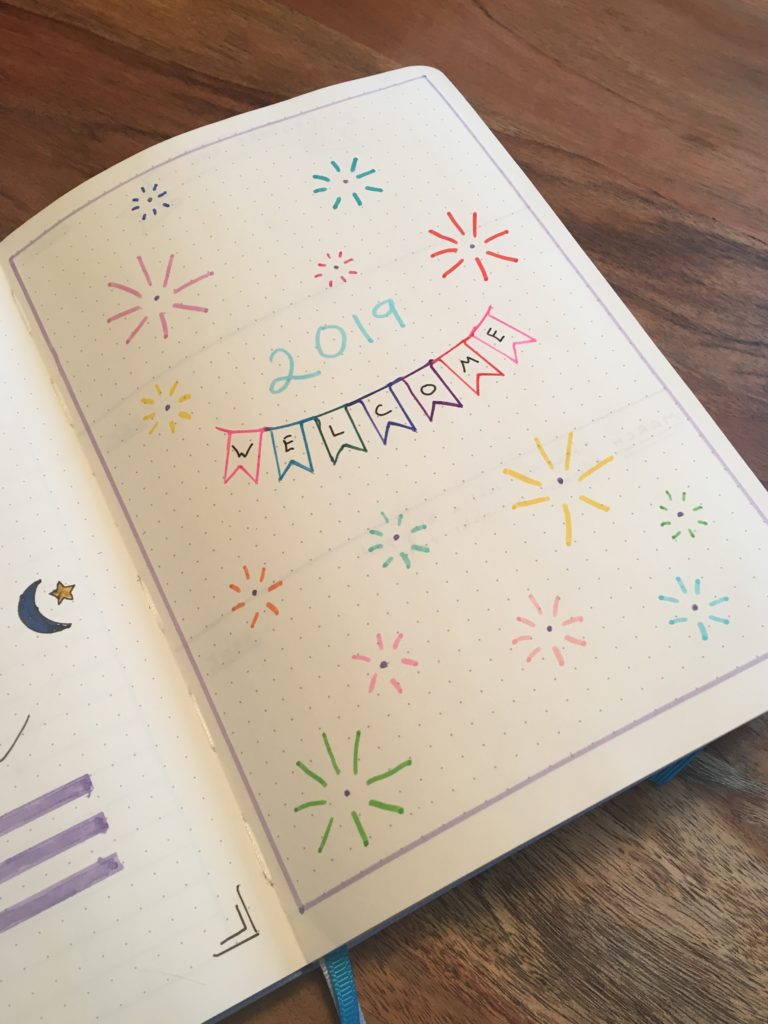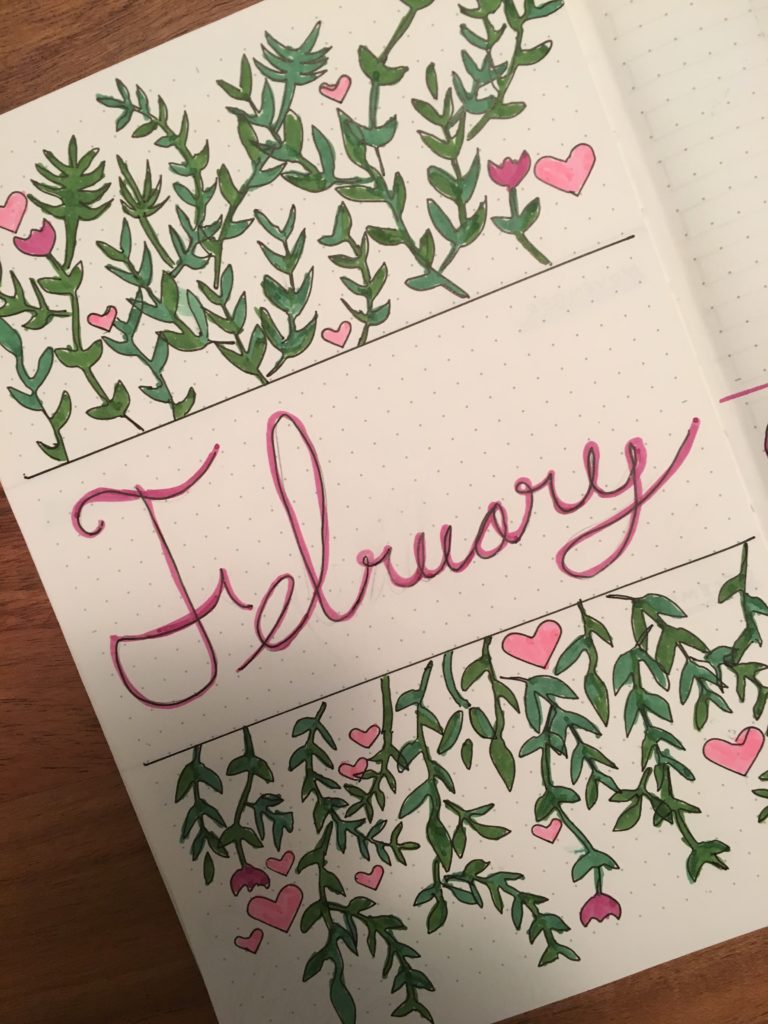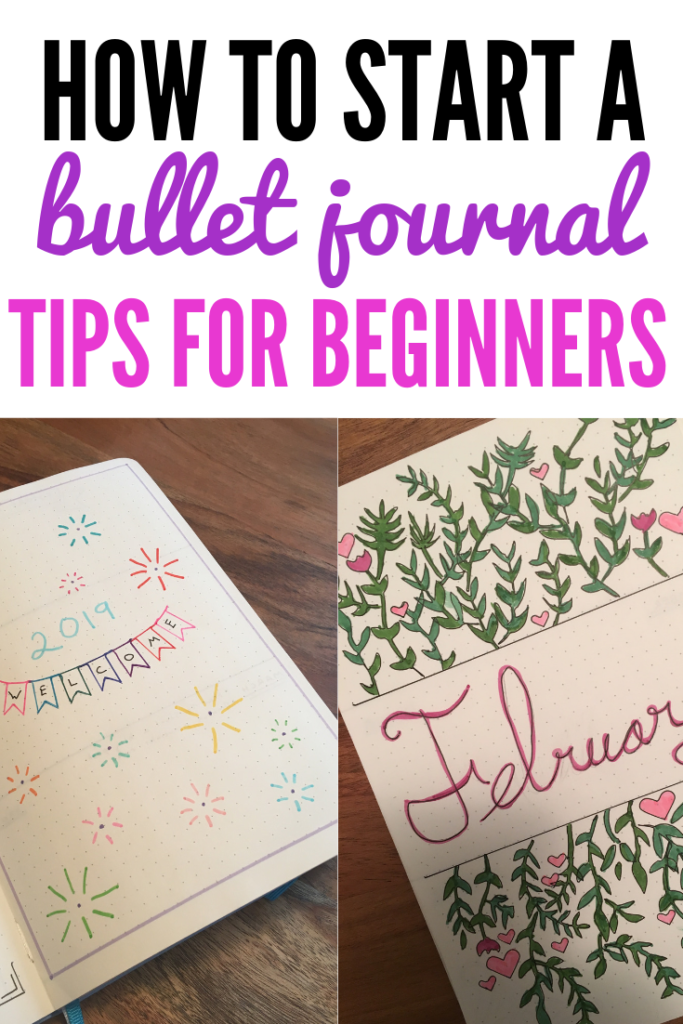When you first discover bullet journaling, it can be intimidating: complex layouts, cryptic symbols, perfect lettering, overly artistic pages…
For years, I avoided keeping a bullet journal because it seemed like way too much work. It wasn’t until I had three notebooks piled on my desk, all full of different ideas, that I realized I needed a system that would allow me to more easily access all my various ideas without having to flip through multiple notebooks (I could never find anything!).
Starting a bullet journal seemed like the perfect solution.
I ordered the Bullet Journal Method (highly recommend if you want to really understand what bullet journaling is all about), got myself my supplies, and set out to become a bullet journalist.
However, there were still a lot of questions and concerns that came up for me when I started my bullet journal. In this post, I’m going to address those initial roadblocks to bullet journaling, so that hopefully if you’re looking to start a bullet journal, you can start off on the right foot, without all the confusion and overwhelm.
Okay, enough talk, onto the tips that will help you start a bullet journal!
Disclaimer: this post does contain affiliate links, which means if you purchase through one of my links, I make a small commission at no cost to you. Just know that everything I’m recommending here, I both use and love
Step One: Get your supplies
Let’s be clear: to bullet journal, you don’t need anything other than a pen and a notebook.
Your notebook doesn’t even have to be dotted, if you don’t want it to be (the dots just help you line everything up so it’s neater).
Having said that, if you’re anything like me and you get excited about new stationary, I totally get how tempting it is to go out and buy a ton of products before you even start.
And so, to combat the overwhelm of wanting to break the bank on stationary, I made a list of essential bullet journal supplies that I think will make your bullet journaling experience easier, but also more fun.
These are all products that I purchased myself when I started bullet journaling, and they’re all products that I would highly recommend for any beginner bullet journalist.
1. A High Quality Notebook
When trying to decide which bullet journal to get, one of the top recommendations you’ll likely comes across is the Leuchttrum A5 dotted notebook. While I’m sure this a great option, I decided to go with something different.
I am currently using the Scribbles That Matter A5 dotted notebook in periwinkle.
I kept coming across reviews that mentioned how the Leuchttrum notebook is prone to ghosting (this is when the pen/marker shows through on the other side of the page). This is my biggest pet peeve with notebooks, which is what motivated me to find an alternative to the Leuchttrum.
With the Scribbles That Matters notebook, I liked that it had super thick paper (110 gsm), numbered pages, an index, a pen hook, a pocket in the back of the book, pages that truly do lay flat, and to be honest, I just liked their colors options better.
I can’t speak for the Leuttchrum notebook, but if you’re looking for a high quality bullet journal that doesn’t ghost, based on my personal experience, I would say the Scribbles That Matter notebook is your best option.
2. Quality Pens
Similarly to my notebook, I wanted to purchase a go-to pen that I could rely on, and that would be specifically for my bullet journal.
I decided to go with the Uni-Ball Signo Gel Pen, and so far I’m absolutely loving this purchase. I keep it right in the hook of my bullet journal for easy access.
In addition, I love that the ink never smudges, the pen rolls perfectly for easy writing, and it’s known for being the top choice for artists and writers. Not to mention, it just makes my printing look nicer because of the high quality ink.
Of course, though, if you want some more color options for your bullet journal, I’ve got you covered with the Pilot FriXion pens.
I already owned these, so I didn’t buy them when I purchased my bullet journal, but I’ve been using them almost as much as the Uni-Ball.
In particular, this pack is an amazing option because the ink is actually erasable.
Yup, you read that correctly. If you make a mistake in your bullet journal using one of these pens, you can erase it, which is a great if you’re a beginner bullet journalist and you’re a perfectionist like me.
Here’s the pens in action on my bullet journal’s title page:
3. Speciality Pens//Doodling Supplies
After you purchase your new pens and a notebook, you’re ready to bullet journal; however, if think you’re going to be doing a lot of doodling, I would also suggest picking up the Crayola Super Tip Markers.
This is a pack of 50 markers in every color of the rainbow, which is awesome if you’re planning on making your bullet journal colorful and fun.
Here’s a sample of what I’ve done with the Crayola markers.
I keep things pretty simple, but just a little color can go a long way. Also, I’m not an artist, so I used stencils to create this spread (this is the exact stencil set that I used).
In addition, if you really want to take your bullet journaling to the next level, I always do any drawing in my bullet journal with the Sakura Pigma Micron pens in black. They give a more crisp and precise line than the standard pen, which you can also see in the above image.
RELATED: Simple Bullet Journal Weekly Spreads That Anyone Can Do + How
Really, at the end of the day, how many different supplies you want for your bullet journal depends on how creative you plan on getting, but in general, I would highly recommend the notebook, the pen, and the markers.
2. Don’t be scared to mess up
This tip is key for when you’re just starting your bullet journal: you’re allowed to make mistakes.
I already have spelling mistakes, bad layouts, and pen marks in mine.
When this happens, remember why you started your bullet journal in the first place.
Sure, for some of us, aesthetics are important, but at the end of the day, if you’re obsessing over every little detail in your bullet journal, there’s a good chance you’re not getting anything done, which kind of defeats the purpose of starting a bullet journal.
Don’t be scared of your bullet journal. Be okay if mistakes come up. They’re inevitable. Simply move on and keep bullet journaling.
3. Don’t feel restricted or obligated to bullet journal “right”
When I was first introduced to bullet journaling, I was dedicated to bullet journaling “right.”
Even if a monthly spread didn’t really have any particular use for me, I still felt like I needed to have one, because that’s how bullet journaling is done, right?
Wrong!
With bullet journaling, you’re allowed to do whatever you want. That’s the beauty of planning your life using a completely blank page.
If you want to write out tasks by the month, go for it.
If you’re more inclined to go week-by-week, totally cool.
And hey, if you’re using your bullet journal more for note taking and productivity tracking, feel free to skip certain spreads altogether.
Your bullet journal is there to help you organize whatever areas of your life need organizing. Don’t feel restricted to bullet journal “right.”
4. Just start/practice
In that same vein, if you don’t know where to start, or what exactly you want your bullet journal to accomplish, just open it up and BEGIN.
Month by month, you’ll start to realize what spreads work best for you, so that by the time you get to the end of the year, you’ll have mastered your bullet journal spreads for maximum productivity.
If you spend all your time trying to come up with the perfect spread, chances are, you’re never going to get anything done, and you’re going to give up on bullet journaling because of how long everything is taking you.
Experiment with different layouts and spreads to find your ideal match.
5. Understand index, future log, daily log, migration and collection
If you’re just starting a bullet journal and you’re still finding it confusing, I would suggest simply understanding what the above 5 core principles of bullet journaling are.
Don’t worry too much about things like trackers and fancy spread layouts. Just understand these basics:
Your index is simply your table of contents, showing you exactly where everything is stored in your bullet journal for easy access.
Your future log is a yearly overview of things you want to accomplish in upcoming months.
Your daily log is essentially your To Do list for the day (personally I’ll write out a weekly log of things I want to accomplish, and then I split tasks up into daily… some people will do monthly logs, and then go day-by-day, but this doesn’t work for me).
Migration happens when you don’t complete a task for the day. You migrate the task back into the future log, indicating that you’ll do the task in an upcoming month, or you migrate the task to the next day.
And lastly, collections are simply lists and notes that will be different for everyone. For example, I have a collection of blog post ideas. A collection can be any sort of list, or set of ideas that you want to have easy access to, but don’t get too caught up in creating collections just for the sake of it. Only create collections if they’ll serve you.
Once you stop over-complicating bullet journaling, and just focus on those 5 core principles, I find the whole process is actually relatively straight forward.
6. Try putting non-timeline collections in the back of your bullet journal
I think one of the most confusing things I found when I started bullet journaling was I didn’t know where everything should go.
Basically, what I’ve found works best for me is in the front of my bullet journal I just go day by day. So I’ll have a title page for the month, and then I’ll write out goals for the month, my blog’s analytics, a productivity tracker, a weekly to-do list, and then I simply start writing out the day’s task each day. Pretty simple.
For collections, I start these in the back of my bullet journal and work my way forward. This way, I don’t just randomly have a collection in the middle of February, because, chances are, if I put my collections in the middle of the month, I’ll forget about them.
I like to keep anything that has to do with the specific month within the month, but then any non-time related collections all go in the back of my bullet journal and I work my way forward.
Once I had that under control, I knew exactly how my bullet journal would progress.
I hope that makes bullet journaling a little easier for you.
I know how overwhelming it can be when you’re just learning to bullet journal, but really, like I said, once you have the core ideas down, bullet journaling isn’t that complicated.
It’s all about just using the process to meet your own needs. That’s the beauty of it: a bullet journal can be whatever you want it to be!
Do you use a bullet journal? Let me know: how has bullet journaling increased your productivity?
If you found this post helpful, please feel free to share this image on your Pinterest with your friends. Thanks so much!



Leave a Reply